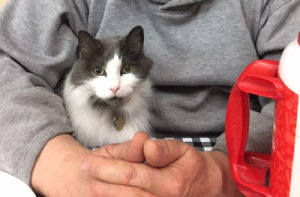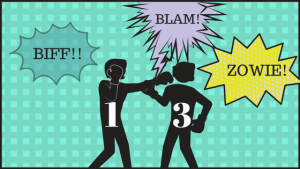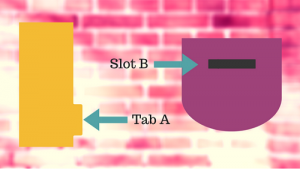Posts by Jan O'Hara
Scenario #1: In revision instructions for your manuscript, your editor asks you to make backstory available through active discovery rather than dialogue. This means inserting a scene or two in the second act, which sounds great in principle. Except the book’s plot became fossilized some time ago for you, and you can’t see where to begin chiseling.
Scenario #2: You’ve written an over-the-top romantic dramedy filled with office politics and secrets. The climax requires a confrontation between three characters which will preferably take place without any possibility of interruption or escape. Also preferable? That it assumes the qualities of a Hollywood set piece, with a backdrop of cinematic appeal, stunt performances, and an outrageous budget if filmed.*
***
There’s a brainstorming technique I’ve used to good effect to solve challenges such as these, and I’ve recently discovered it’s not obvious to other writers. So in case this will be of help to some of you, here goes.
Begin by listing your story’s known or potential settings.
I like to start with geographical formations and move from the big picture to the granular. If I were writing a space opera, for instance, my list would begin by naming the solar system and planetary options. It might conclude with the layout of a specific star cruiser’s engine room.
In your list of assets, don’t forget to include man-made infrastructure related to politics, healthcare, education, commerce, and transportation.
As with all brainstorming, don’t limit your imagination. Later, you will discard some items as being a poor fit for your story’s genre, tone, or level of realism. For example, you’re unlikely to want a James Bondesque setting for an introspective education drama. Or a safe injection site within a sweet, fantastical romance. But for now, just go crazy.
If I were writing a story set in a small town in the Rockies, my list might go something like this:
Then I’d take one of the above items and break it down further.
For example: glacier > tour company’s office, touring bus, ice cave, meltwater stream, crevasse
Pro tip #1: As you write, you’ll likely find plot elements start to suggest themselves. Jot them down and keep going unless you’ve stumbled over the perfect solution.
Pro Tip #2: Depending upon your general setting and characters’ resources, your location-related assets might be limited or vast. (For example, a murder mystery featuring a globe-trotting billionaire versus a miner trapped by a cave-in.) In general, the fewer the setting options, the more granular you will need to go to find inspiration.
Running dry on location ideas? Broaden your repertoire.
Read More
Covid-19 is a disruptive, dangerous and potentially lethal experience. It also contains an upside for writers, hard as that might be to imagine. In gaining a visceral, firsthand understanding of Before and After—as in “life before and after a pandemic”—we can get better at writing a crucial element of story: emotional turning points.
What is a turning point?
It’s the moment of change when a character learns something new, and with that fresh understanding of the nature of reality, they will think, feel, or act differently going forward. They have evolved into different people.
Note that emotional turning points need not be an improvement over the status quo to qualify!
Here’s a meme which humorously captures the principle.
Commercial fiction is chock full of emotional turning points. Look closely, and you will see them at the level of the full story (character arc), subplot, chapter, and scene.
They drive reader engagement. In fact, if readers can skip entire chapters without feeling that the story suffers, odds are you have focused on plot—the story’s external events—but not how said events drive emotional change.
How do you know if your scene contains an emotional turning point?
I’m paraphrasing Donald Maass here, but at the level of scene, he has laid down a tidy marker of emotional change in the following setup:
“Five minutes before [your character] _____; now he/she ______.”
Can you fill in the blanks by describing a shift in emotional state? If yes, odds are you have a turning point. If no, you might have work to do.
For example, sex scenes are notorious for providing action without an accompanying emotional payoff, and therefore being skipable. But here’s a sex scene which does include an emotional turning point:
Five minutes before, Ben believed Lois to be so vain that she would forgo all fun in life to protect her appearance; now, after sex, Ben believes she wears her makeup as protective armor.
Pro Tip: Alter the time encompassed in the test phrase, and extend the principle to story chunks of different sizes, using it to pinpoint why certain portions of it don’t sing. (e.g. “Five seconds/days/years/decades before…”)
This would also help to avoid jokes about Ben’s prowess.
Effective Signposts
While you can signal the presence of an emotional turning point in various ways, not all methods carry equal punch. To examine why that might be, I thought we could outline a short story, look at our choices, and determine why we might pick one option over another.
Let’s take a scenario being played out in homes all over the world right now. We’ll take a longtime-married fictional couple, Helen and George, who bear absolutely no resemblance to this author and her ToolMaster husband.
What began as a shiny, hopeful relationship has become tarnished by neglect, misunderstanding, and responsibility. Our couple shot through a period of mutual indifference some time ago. Now they’re caught in a vicious cycle of nagging and stonewalling.
Covid-19 came along in February, and with it, the need for both to work from home.
Let’s confine ourselves to a series of dinnertime scenes, where Helen, our main character and narrator, does little but pace the kitchen.
Scene #1
It’s the usual story, Helen thinks. After exhausting essential conversation, during which time they quarreled about who was right about scenario X […]
Read MoreIn mid-December, with teeth aching from the sweetness of Hallmark movies and a half-crocheted afghan to complete for Christmas, I changed TV channels in search of a different kind of background noise. That’s how I stumbled across a treasure: the Emmy-award-winning biopic, Temple Grandin.
I wasn’t familiar with Grandin and have since found I’m not alone. Grandin, who is on the spectrum, was born at a time when autism was barely acknowledged let alone managed with any competence or understanding. Still, she rose from an asocial child to autism advocate. Also, a Ph.D. professor of animal husbandry whose designs are used in over half of America’s feedlots and slaughterhouses because they are comparatively humane.
How she did this contains lessons for the struggling writer.
Skill Acquisition
As played by the talented Claire Danes, one of Grandin’s most effective strategies was to focus on gaining competence and experience, which in turn inspired confidence.
For example, having the good fortune to be born into a wealthy family, she used resources that weren’t standard practice, such as speech therapy.
In the private school she attended, she worked hard to explain the science behind a visual distortion, gaining both technical knowledge and the respect of her peers when she was the first to solve the puzzle.
When she couldn’t identify the meaning behind facial expressions, her aunt made visual cue cards and Grandin drilled herself mercilessly until she had them memorized.
She absorbed her mother’s social scripts to handle specific situations, such as meeting someone for the first time.
She plied her unique observational skills during time on a cattle farm, gaining deep understanding of animal behavior and farm mechanics.
Notably, as her competence increased, Grandin’s confidence improved and her meltdowns diminished. (You’ll notice the order of acquisition? Skillset leading to confidence, not the other way around.)
Follow Grandin’s Steps to Gain Writerly Competence
But what if there is plenty of evidence that you possess the skills already, yet anxiety is crippling your efforts? Or what if you’re willing to work hard but anxiety is getting in the way of an active apprenticeship? Here, too, the movie had suggestions.
Manage Expectations
Are you a worrier in general? Highly conscientious? If so, much like being on the spectrum, these tend to be stable traits. To some degree you are probably stuck with the symptoms. So stop waiting to feel okay to write. That day is unlikely to arrive.
Write, but learn how to manage your emotions using some options below.
Construct Your Own Squeeze Box
To perform well, we humans need to keep our flight-or-fight hormones within manageable levels. […]
Read MoreLast year, events conspired to threaten the life of our geriatric cat.
Now, I don’t like to see any creature suffer, but Needles is special. He manages to be independent without being aloof. He greets strangers with a tongue-bath and an intense stare that says, I see you. And he is intuitive about psychological pain, often curling up in the laps of the distressed. In fact, when one of my children went through a profound episode of depression during elementary school, Needles was a rare and consistent source of comfort.
So when he fell ill and the treatment meant a big financial investment with little promise of good results, we were grateful we could afford the expense. Still more grateful when he pulled through.
Then, during a routine followup visit to the vet’s, we nearly lost him, anyway.
It was partly our fault. Because we didn’t know any better, we were making do with a hard-sided kennel meant for a medium-sized dog. That’s fine when the goal is to prevent a cat from walking around loose in a vehicle. It’s not ideal when dealing with lane-changing idiots.
Picture this: my husband forced to slam on the brakes. Momentum flinging Needles’s 6.5-pound, still emaciated body against the bars. His low-key yowling—an unfortunate and constant feature of car trips—stopping altogether. And into the ominous silence, the piercing scent of ammonia, signifying that our fastidious cat had lost control of his bladder.
Thankfully he survived, with dignity and body sullied but spirit intact.
After this near cat-astrophe we got smarter, purchasing a soft-sided, properly sized, airline approved pet carrier that Needles occasionally uses for naps.
What does this have to do with your writing?
Well, perhaps you’re like us, motoring along, making decent progress in your work-in-progress with the equipment at hand, unaware that said equipment contains built-in vulnerabilities. Why wait until a sudden jolt threatens a crisis? Periodically, take a few minutes to question your assumptions and ensure that you’re using the right tool for the right job. While you’re at it, see if you can become more efficient.
For instance, when I started writing, I made do with pen, scribblers, and Microsoft Word. Over the years, I’ve gradually come to see the following items as useful or indispensable:
Backup equipment and routine
Are you prepared for a localized computer problem such as a hard drive failure? Awesome. But is your backup system in the cloud and potentially vulnerable to hackers? Or local and vulnerable to the same house fire that could destroy the original files?
It’s worth taking a few minutes to build in true redundancy.
Please do your own research and come to conclusions about best practices, but to get you started, here’s a post from the Passive Guy explaining risks and potential solutions.
Computer glasses
If your optical prescription is stable and you use bifocals or progressives, consider having a special pair of glasses made just for office work. The larger visual field reduces eyestrain and headache frequency, making it possible to spend longer periods at the keyboard.
Recipe cards, sticky notes, and poster board
Though I began writing as a pure pantser, once I learned to use these items, I successfully transitioned to becoming a quilter. (For me, it provides the perfect blend of reassurance that my story […]
Read MoreYou meet them when you attend a family picnic or during a shared lunch at work. Even when you’re cheering your kid on from the sidelines of a soccer game. They cut across all socio-economic statuses, gender identities, religions, and nationalities. What am I talking about? The phenomenon Jane Friedman recently dubbed the natural writer—when people learn you write, display a micro-second of interest in your career, and immediately switch to talking about their own writing ambitions. After all, they’ve always known they have a book or two in them. Wouldn’t you now like to discuss and advance their ideas?¹
Universality Points to Origins
Have you ever wondered why this is a ubiquitous experience? Surely something is prodding the average human to harbor unfulfilled writing fantasies. It can’t be mere coincidence.
Hint: it isn’t.
When a behavior is displayed by all members of a given species, you can be confident it is a trait embedded within their DNA. Here, then, are four principles of evolutionary psychology that explain the nascent desire to write.²
Bred to be a Scheherazade
In her excellent book, Wired for Story, Lisa Cron makes the case that story is a sophisticated means of encoding worldly wisdom, providing a survival advantage to its consumers. Story teaches us how to navigate a hostile world without the risk of direct, dangerous experience. Listen to Hansel and Gretel, for example, and you needn’t be personally left in the forest by your woodcutter father to learn caution around too-benevolent strangers.
Over centuries, because the DNA of story consumers is reproduced more often than that of story non-consumers, our brains have evolved to ensure the experience is pleasurable. Stories activate special circuits in our neocortex, causing us to feel good—to feel entertained.
As story consumers must have story creators to complete the virtuous cycle, it follows that story generation would invoke similarly positive emotions.
Born to Mild Narcissism
This doesn’t explain everything you’ll observe about natural writers, however. For instance, your neighbor doesn’t read. Nor have they picked up a pen since leaving high school. Yet somehow they absolutely believe their stories will fascinate others in the modern-day equivalent of the Stone Age village. In fact, if pressed, they’d probably tell you their inborn talent lies in the upper half of the storytelling bell curve.
From where does this unearned confidence arise?
The answer is that, on average, humans are engineered to be a tad narcissistic. We consistently see ourselves as more capable than is objectively true.
Imagine the evolutionary disaster that would occur if this weren’t the case.
If our species was calibrated to be wildly overconfident, we would take unnecessary risks and not live long enough to reproduce. Possess DNA that makes you too humble, however, and you won’t seize a new opportunity that might bring a survival advantage. Or you could become so risk-averse, so cautious, that a series of fresh, minor obstacles could lead to your extinction.
The sweet spot for human evolution, then, is the position of mild narcissism. We are bred to believe we hold innate talent in the storytelling realm. Under the right conditions, we’ll give it a whirl. Then, depending upon the feedback we receive from the competitive marketplace—and how much the storytelling process itself is self-rewarding by tickling the pleasure circuits in our brain—we will alter our behavior.
Get harsh feedback? We […]
Read MoreI love satire in general and Saturday Night Live in particular, but there’s one series of sketches I wish I could erase from my mental library: Al Franken’s take-down of the 1990s’ self-help industry in the form of his character, Stuart Smalley.
Have you seen these skits? They feature an effeminate man who dresses in pastel sweaters and speaks with a lisp. Having affixed a goofy smile to his face, he looks into a mirror and spouts several affirmations that are patently untrue, full of psychobabble, or so non-specific as to be incapable of helping anyone take positive action.
Here’s a short example of Stuart preparing to tape a segment:
And if you’re still on Facebook, here he “helps” Michael Jordan.
Why do I regret having seen these videos?
Setting aside political issues about the actor and the cringeworthy reinforcement of rigid gender roles and stereotypes, my objections are two-fold:
How I became a convert:
Though I’ve been writing for decades, during 2018, I feel like I finally became a writer—one with modest external success, and with ambitions that exceed her grasp, but a writer nonetheless.
Part of this is a function of experience; having now written three novels, the third of which will come out in February, the writing bug has only intensified. It’s becoming undeniable to the world, and more importantly to myself, that writing is part of my identity.
But part of this is that, while composing my third novel, I finally developed rituals to conquer pre-writing anxiety. Surprise! A big part of that was developing writing-related affirmations.
Given my tortured recollection of the Stuart Smalley era, I started small and somewhat accidentally.
One day, when beginning the book on a tight-for-me deadline and with little idea of where I was headed, I sat down to write my first chapter—only, it wasn’t going well and I was entering a self-perpetuating cycle of blockage and negativity. “What happened to having fun?” I remember thinking. “What happened to my pledge to write with the growth mindset?” (If you haven’t read Carol Dweck’s book, Mindset, I urge you to pick up a copy, especially if you are a parent.)
In a state of supreme frustration, I picked up a blank recipe card and jotted down the following:
I write joyfully and with an experimental mindset. I often discover the best material in the spirit of play.
Writing that was like setting a mental goal post of sorts, yes? To my surprise, it helped—immediately and for about a month, until something happened in the real world and I could no longer conjure a playful attitude for the life of me. Suddenly, that single affirmation felt stifling in its own right. I mean, on top of coping with everything else, was I supposed to fake my way into having fun so that I could write?
Obviously that wasn’t going to work.
The answer turned out to lie within another […]
Read MoreA year and a half ago, in the grip of a writing deadline I feared I would miss, I discovered an environmental productivity hack I’ve used ever since.
Its unearthing came about by experimentation. I’d been trying to write in various public locations, but if I found a fruitful environment it was only a matter of time until something would drive me away. (A shrill laugh that couldn’t be neutralized by earplugs and headphones; flirting teens who’d repeatedly bump my table; an insistent bladder and remote bathroom, with no one reliable to watch my stuff during my absence.)
These jaunts proved expensive, too. Effectively I was earning temporary office space by paying in time (for my commute) or coin (parking fees, beverages, calorie-dense food.)
I haven’t even mentioned my introversion, which never thrilled to writing in public for extended periods.
Quest for the Ultimate Home Office
It became clear that I was after replicable and inexpensive quiet, which ideally meant writing at home. Unfortunately, my house had become a busy locale, which was the reason I ventured outside of it to write in the first place. No matter how early I woke or how I much I contorted my writing schedule, it never possessed a sense of repose or peacefulness.
Most problematic of all, my office—the only location I could seem to write without falling asleep—had become associated with stalled progress and interruptions. Each time I entered it, I could feel my deadline-driven anxiety rise.
Discovering the Secret Weapon
I don’t recall the exact precipitator, but one day, in a fit of desperation, I wound up in the basement laundry room with my laptop. And suddenly, what felt impossible was being accomplished, albeit in fits and starts. I returned the next day, and the next, and through books 1 and 2, the laundry room never lost its magic. In effect, I ended up discovering the wisdom in the following:
Stop trying to be disciplined and be a good person. Instead, put your efforts into setting up a supportive environment and creating the systems that allow you to follow through with good behaviors.” ~ a paraphrase of Dr. Doug Lisle, Ph.D, during a YouTube seminar on how to make healthful dietary changes become habitual
Why You Might Consider Pursuing an Environmental Writing Hack
Unless you are one of those 5,000-8,000 good-words-in-a-day geniuses or are consistently happy with your writing output, I’d encourage you to spend time and effort on optimizing your environment.
Consider that if you’re able to write 1000 words in a writing session and write 300 days of the year, a 5% improvement—a mere 50 words a day—would mean an extra 15,000 quality words written. A fifth to third of a book without any extra effort.
Going About the Environmental Hack
Read MoreA few months ago, in response to a personal conundrum I shared with you, we debated the merits of wrestling a novel that wanted to be written in first-person into third, and whether that would be wise from a marketing perspective. Positions were expounded, personal research advanced, and a few minds possibly changed or stretched. Well, my friends, if you are an indie writer, or traditionally published but able to influence your book’s marketing campaign, the first-third debate doesn’t end there.
You have yet another decision to make.
To wit, have you noticed the accelerating trend toward first-person marketing copy? i.e. taglines or back cover copy written from within the point of view of one or more characters? (Click here for a peek at the current #6 book in the Kindle US store.)
At the time I was putting out Cold and Hottie, given its frequent use by some of contemporary romance’s bestselling authors, I certainly did. But would it be the right move?
To get a handle on best practices, I did an unofficial survey of followers on my Facebook page—presumably people open to my fiction—and asked them what they thought of first-person book blurbs. Before I summarize what they said, I should make it clear that my author page skews heavily toward other writers. Their collective wisdom, therefore, might not extend to readers in general or your genre’s readers in particular. As you might have noticed, a good number of us get hung up on rules that readers don’t see as necessary.
With that said, here are the results:
Read More
Last year, as a way of giving myself a meaningful deadline and my writing broader exposure, I signed a contract to participate in a multi-author boxed set. In theory, the expectations around my story were quite doable: a half year in which to write and edit a 20,000-word contemporary romance novella. I even had the nugget of an intriguing idea and began writing without delay.
For a time, progress was excellent.
Famous last words, right? Because of course, with three months left on the calendar, the challenges began.
First, with 30,000 words composed, it was obvious I was on my way to writing a full-length novel.
This wasn’t a deal-breaker, however. I knew where the story was headed (look at me, becoming a grown-up outliner and such!) and I was still in love with the idea. It felt like a fresh take on a hot trend (office romance), and it was exciting to think of writing a marketable book I also adored.
The bigger issue, and the one I needed to solve immediately, was that my characters were becoming emotionally removed. They did stuff, but they had stopped explaining the why of their actions.
The solution was one I have employed to good result in the past: write in first-person, then convert the passages to third. (This approach can provide added benefit by deepening the third-person point of view.)*
And lo, when I tried it, the heavens did part and the pages did sing. I suddenly had character motivation, emotionality, and internal consistency.
I also had the passages in first-person present tense—a problem because, try as I might, I couldn’t get them to match the preceding 30,000 words, written in third-person past.
With the deadline approaching, I could see four options:
What was an author to do, especially an author still building her audience? An author who didn’t want to sacrifice quality, and who hates missing deadlines?
Honestly, the conundrum made my head hurt. This was the first time as an indie writer that I urgently longed for an agent or publisher’s advice.
Here’s how I compensated:
Read MoreAssuming you have a non-writing professional background, have you ever blamed it for those moments in the writing life when your courage deserts you?
If not, perhaps you should reconsider.*
The topic I want to noodle on today is one sparked by an online article I read some years ago and wish I could cite. (If you know the post I refer to, please leave me a comment so I can give the author credit!) Alas, all that remains with me is the core idea: that certain types of occupational training, especially training connected to professions like law and medicine, invite caution and steadiness, making it harder to enter the entrepreneurial mindset or take creative leaps.
This idea struck me forcefully at the time and felt deeply true. It also led to a number of discouraging thoughts. (I already struggle against introversion and a nature that defaults to reflection, rather than action. Now I’m to fight 21 years of super-reinforced training?)
Fortunately, it didn’t take long until I saw the counterbalancing argument—the side of hope. For if one can be trained into a state of over-caution, one can presumably be trained out of it. (More on how to deprogram yourself in a bit.)
First, is there any evidence to support this idea?
I’m not aware of any academic studies, so I put out a call on Facebook, asking if other careers had a system to formalize caution. Here are some of the replies:
From Priya Gill : In engineering we use “fail safe” positions so everything is designed such that if it fails it would go to the position of safety. So lights would turn off and systems shut down upon failure rather than staying on and put everything and everyone in danger.”
Terri Lynn Coop mentioned the voluntary oath she took upon graduating. In part, it contains this text: “I am an Engineer. In my profession I take deep pride. To it, I owe solemn obligations… As an Engineer, I pledge to practice integrity and fair dealing, tolerance and respect, and to uphold devotion to the standards and the dignity of my profession, conscious always that my skill carries with it the obligation to serve humanity by making the best use of Earth’s precious wealth.”
D.A. Winsor, an academician by day and writer by night, provided an example of the ethical considerations which go into any kind of academic research. One quote: “The design of the research should be such that all risks are minimized as much as possible, and that any remaining risks are clearly identified to participants so that they may make an informed choice about whether or not to participate…”
And then of course there’s my own contribution. Medicine. A land of high-level contradictions and the Mother of All Risk-Avoidant Professions.
Consider that, to become a doctor, you must adopt:
Read More
In the past few weeks, in the vernacular of salespeople, I’ve been girding my loins to make an “ask” about a promotional opportunity for my book.
It’s not the technical aspects of the proposal which have me daunted so much as the prospect of being greeted with scorn. Like many of us, I’d rather walk blindfolded, backwards and barefoot through a ten-mile brier patch than spend thirty seconds asking someone for their time or money.
Yet as I came here the other day to read a column by one of my WU colleagues, I was greeted with a pleasant reminder of how things can change. How what was once inconceivable or a struggle becomes acceptable, then commonplace. Even a source of pride.
Tiny Coffee, Big Quandary
Slide your eyes to the end of this post and you’ll see my visible reminder: a short piece of code enabling the reader, if so inclined, to send the article’s writer a virtual cup of coffee. (I include this example for transparency and accuracy! Please do not interpret it as a hint.)
The plugin is discreet, yes? It isn’t contained within a pop-up, or heralded by intrusive music. In terms of calls-to-action it’s one of the gentlest I’ve seen.
All the same, because I was unpublished when it arrived on WU, because I didn’t want to seem uppity, I had to work to rationalize its use.
In the end I chose to proceed because:
1. I appreciated the opportunity for my colleagues.
Interestingly, I was never conflicted on whether they deserved the right to be thanked in a tangible way.
2. It was time to stop being a snob.
When I read someone else’s article, I noticed my gratitude wasn’t related to their publication status but to whether they could pinpoint a writing problem, and guide me to a helpful solution. Often the writers most able to do so were the ones closest to me in publication rank, maybe because they seemed less godlike.
3. I didn’t want to cause a contagion of smallness.
If I held back, others might read my reluctance as implied criticism and second-guess their own decision to use the plugin. Nobody else should be saddled with my psychological baggage.
4. Finally, it was time to signal to myself that I was serious about this writing gig.
Unless my goal was to write forever without expectation of financial reward, I was only delaying the inevitable. Why not claim this small step forward in the quest for professionalism?
What happened in the humiliation department?
Read MoreThere’s a one-mile circular route in my neighborhood that I’ve been walking for twenty-four years. I began by waddling its length when we moved into our home in my late third trimester and it was all I could manage in terms of exercise. After open-heart surgery for a faulty valve, I did the loop with a pillow clutched to my chest, seeing my ability to complete the circuit as a sign of imminent healing. I’ve used the route in a pre-nap ritual to tire my children. Of late, it’s become a quick way to perk myself up between writing spells.
But to whatever purpose I trod this path, until this summer I’ve always accessed it by turning left out of our cul de sac.
World-narrowing Mindsets Can Begin for Good Reason
There are good reasons for that consistency. If you complete the loop in a counterclockwise direction, you are granted a better view of a man-made lake.
It’s easier to peel off to get a cold drink, access a bathroom, or buy a treat—critical considerations when you’re hauling little people along with you.
But the biggest reason of all, and a clear illustration of my order in the pack hierarchy, was that turning left made it easier to walk a dog. This was a matter of sidewalk and grass placement. Walking counter-clockwise meant fewer canine temptations, so that after my pooch had a chance to complete their business, I wasn’t being jerked to a halt every few steps while they sniffed vegetation.
Hope Enters the Scene
I have been dogless for over a year, though, and this summer something broke my conditioning. When it did, and I turned the opposite direction, I discovered a strange and enticing land.
Houses which seemed “meh” from one angle turned out to be carefully tended and picturesque. (The converse was also true.) One particular home, which I considered strictly utilitarian, turned out to have vines entwined around a mullioned bow window and woodland plants beneath, like a cottage from Hansel and Gretel.
How This Connects to Writing
Turning left was a such a minor change to make, yet the results were both disorienting and hopeful. It was as if I’d been a forest dweller my entire life and suddenly discovered the existence of moss.
For me, moments like these crystallize the understanding that with the tiniest shift in perception, left can become right, up can become down, and insofar as writing goes, a serial non-finisher can end the year with not one but two publishing credits to her name. (I had the joy of being a contributor to Author in Progress in addition to independently-publishing my debut novel.)
An Accidental Weaponization of Vulnerabilities
So what happened to allow the necessary changes in my life? I’ve given this a lot of thought because I have no intention of regressing to the less-than-productive writing pattern of the last many years.
My conclusion is that, quite by accident, I created a new environment in which the very things formerly preventing me from writing became the forces driving me inexorably toward it.
In other words, not only did I stop fighting my nature, but to borrow Lisa Cron’s favorite adjective, I endorsed it with a full-throated Yes!
Harnessing the Caregiving Impulse
For example, I’ve spoken before about my tendency to get into caregiver […]
Read More





















